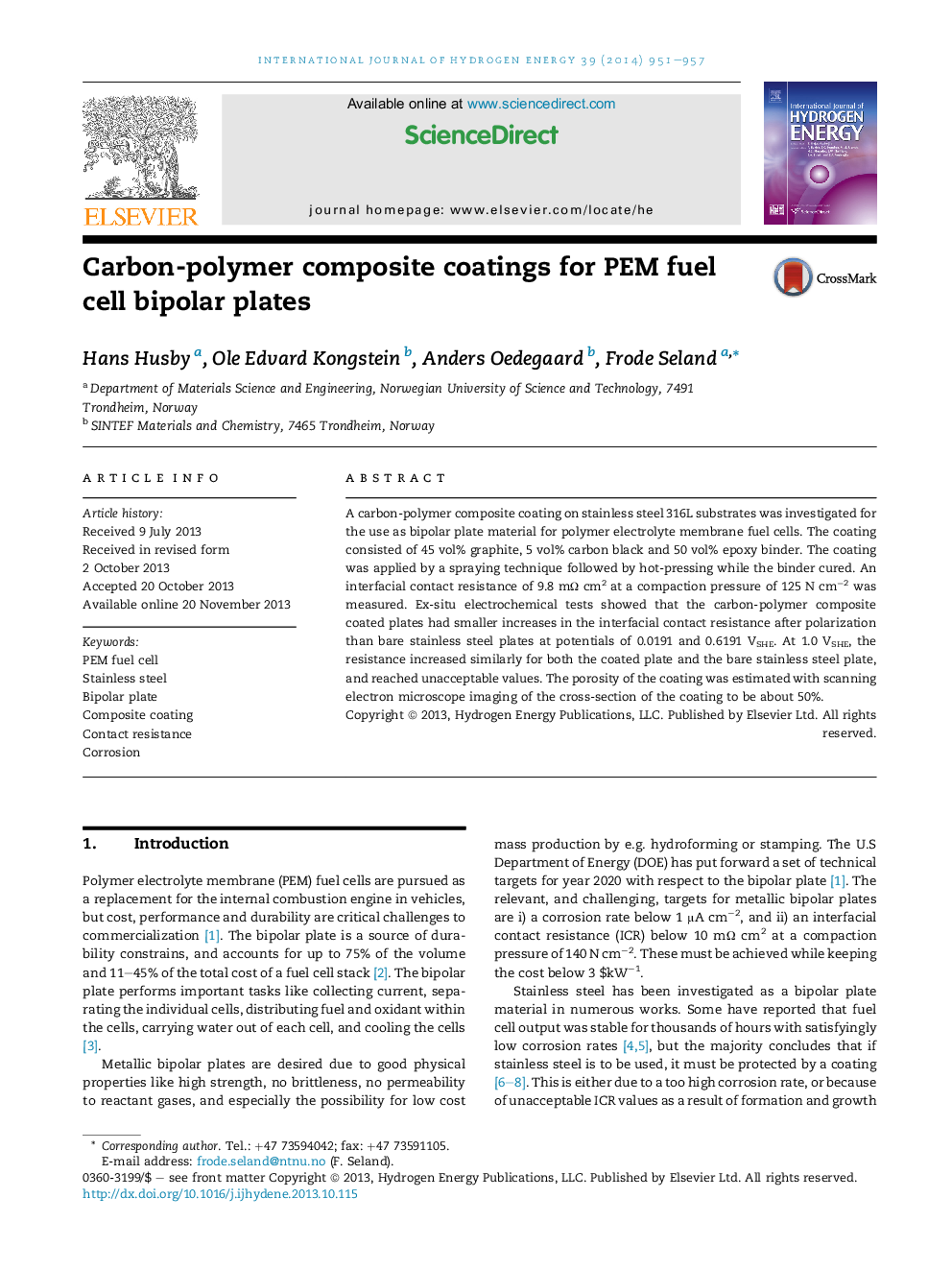| Article ID | Journal | Published Year | Pages | File Type |
|---|---|---|---|---|
| 1276542 | International Journal of Hydrogen Energy | 2014 | 7 Pages |
•Carbon-polymer composite shows potential as stainless steel bipolar plate coating.•The coating provides a low contact resistance after hot-pressing during curing.•Promising corrosion resistances are obtained at lower electrode potentials.•Increased corrosion rates are seen at a higher electrode potential.
A carbon-polymer composite coating on stainless steel 316L substrates was investigated for the use as bipolar plate material for polymer electrolyte membrane fuel cells. The coating consisted of 45 vol% graphite, 5 vol% carbon black and 50 vol% epoxy binder. The coating was applied by a spraying technique followed by hot-pressing while the binder cured. An interfacial contact resistance of 9.8 mΩ cm2 at a compaction pressure of 125 N cm−2 was measured. Ex-situ electrochemical tests showed that the carbon-polymer composite coated plates had smaller increases in the interfacial contact resistance after polarization than bare stainless steel plates at potentials of 0.0191 and 0.6191 VSHE. At 1.0 VSHE, the resistance increased similarly for both the coated plate and the bare stainless steel plate, and reached unacceptable values. The porosity of the coating was estimated with scanning electron microscope imaging of the cross-section of the coating to be about 50%.
